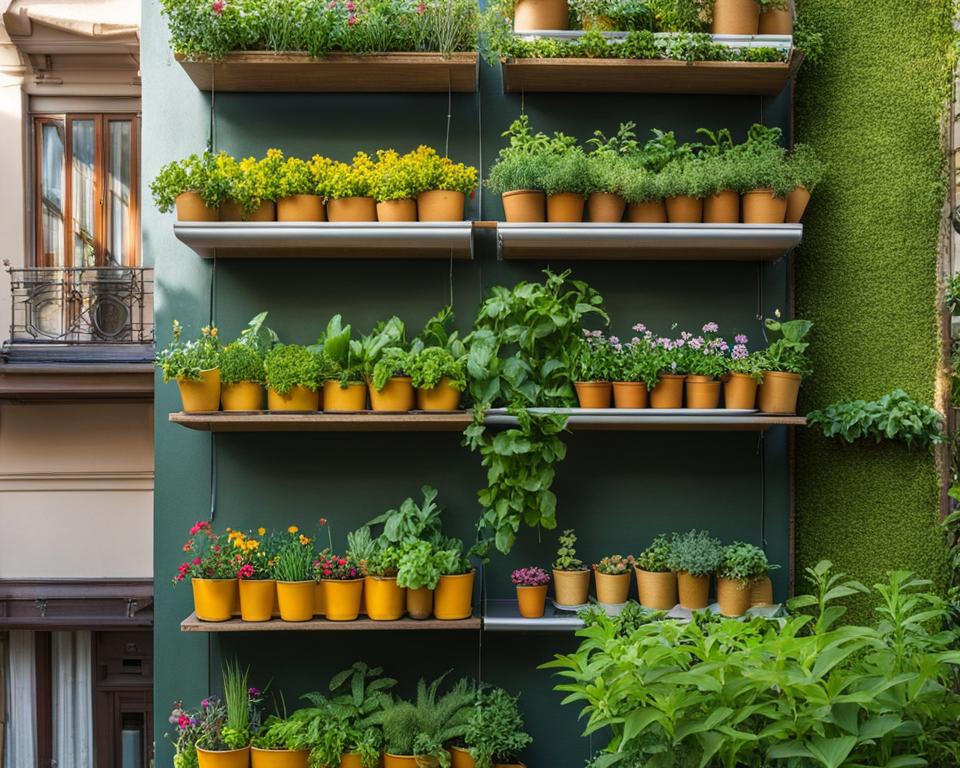Imagine transforming your backyard harvest with an innovative, sustainable gardening method that requires minimal effort and space. Welcome to the world of vertical straw bale gardening! Perfect for urban dwellers, seasoned gardeners, or those looking to try their hand at gardening for the first time, this technique offers a multitude of benefits and opportunities for growth.
Join us as we delve into the ins and outs of vertical straw bale gardening, providing essential tips and guidance on how to create your own thriving, easy-to-maintain garden in even the smallest of spaces. Are you ready to revolutionize your backyard harvest? Let’s get started!
Key Takeaways
- Vertical straw bale gardening is a sustainable and easy gardening technique that maximizes growing space.
- Discover the history of gardening with straw bales and its modern adaptations for vertical techniques.
- Learn how to choose the right straw bales, prep them for planting, and design your vertical straw bale garden layout.
- Explore effective planting strategies for vertical gardening and select the best plants for your straw bale garden.
- Gain practical advice on maintaining your garden, including watering, fertilization, and pest control.
- Eco-friendly and ergonomic advantages make straw bale gardening an ideal solution for gardeners of all abilities.
- Vertical straw bale gardening is a versatile and accessible method for improving your backyard harvest.
What is Vertical Straw Bale Gardening?
Vertical straw bale gardening is an innovative and sustainable method of growing a diverse range of plants in a compact, efficient space by stacking straw bales vertically. It combines the advantages of both straw bale gardening and vertical gardening to create a unique and practical way to cultivate a thriving garden even in limited areas.
So, what is straw bale gardening? At its core, straw bale gardening is a technique that uses bales of straw as the primary growing medium for plants, replacing traditional soil. The straw naturally decomposes over time, providing nutrients to the plants as they grow. This method of gardening has been gaining popularity due to its simplicity, adaptability, and sustainability.
On the other hand, vertical gardening focuses on growing plants upwards instead of across a horizontal layout. Vertical gardening methods include utilizing containers, trellises, and wall-mounted systems to support plants as they reach for the sun. By combining straw bale gardening and vertical gardening techniques, you get the best of both worlds – an eco-friendly, space-saving solution that can be tailored to suit a wide range of plants and garden styles.
Vertical straw bale gardening is a sustainable and efficient way to grow plants in a compact space by stacking straw bales vertically, merging straw bale gardening and vertical gardening methods.
Let’s compare vertical straw bale gardening with traditional gardening techniques:
| Gardening Method | Space Efficiency | Soil Requirements | Sustainability | Maintenance |
|---|---|---|---|---|
| Vertical Straw Bale Gardening | High | No traditional soil needed | Eco-friendly and decomposable | Moderate, depending on plant needs |
| Traditional (in-ground) Gardening | Low | Good-quality soil necessary | Depends on cultivation practices | Higher, due to weed control and soil amendments |
By choosing to adopt vertical straw bale gardening, you can enjoy unique advantages such as space efficiency, soil-disease prevention, and enhanced accessibility for gardeners of all abilities. As you continue to explore this innovative method, you will uncover new ways to customize your garden and create a bountiful harvest that is both eco-friendly and visually appealing.
The Origins of Gardening with Straw Bales
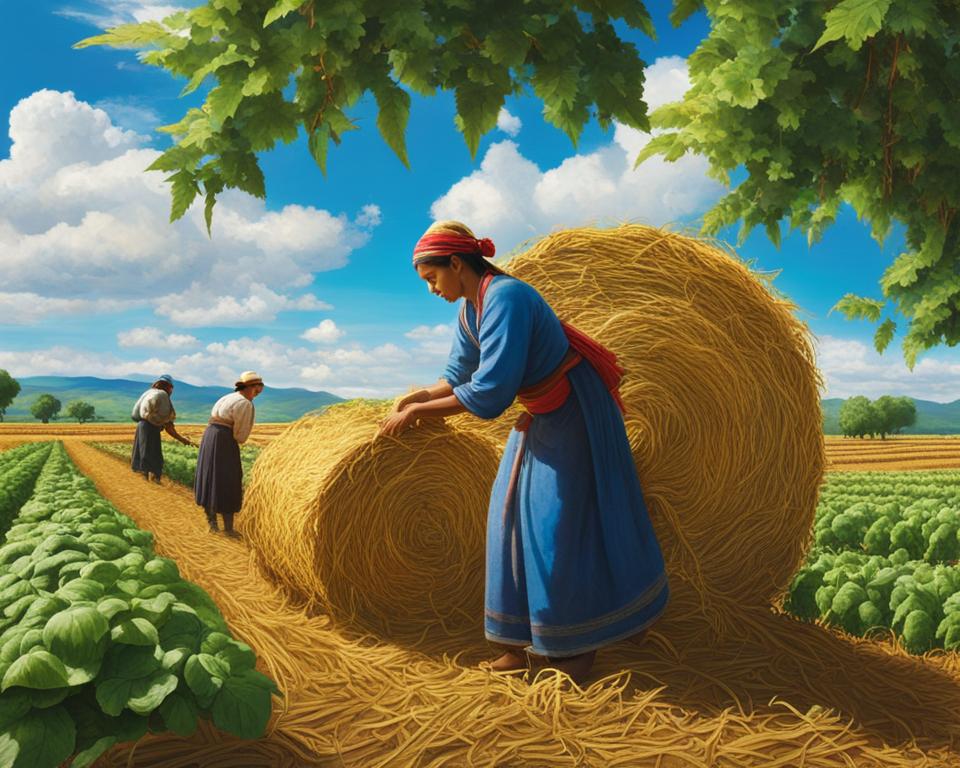
Gardening with straw bales has a rich history that dates back centuries. It was originally a traditional practice in many cultures around the world. In this section, we will explore the historical origins of this unique gardening technique and how it has evolved over time into the modern vertical adaptations we know today.
Historical Insight on Straw Bale Gardening
Straw bale gardening has its roots in various traditional gardening practices. For instance, the ancient Egyptians utilized straw and other organic materials to improve the fertility of their fields, while Native American communities used straw mulching techniques to keep soil moist and warm. With time, these methods formed the foundation of the practice we now know as straw bale gardening.
“The early foundations of straw bale gardening can be traced back to ancient Egyptian and Native American agricultural practices.”
Over the centuries, farmers and gardeners continued using straw bales for various purposes, such as mulching, weed control, and improving soil structure. It wasn’t until more recently that straw bale gardening gained popularity as an alternative to traditional gardening practices, especially among urban gardeners with limited space or poor soil quality.
Modern Adaptations and Vertical Techniques
Modern straw bale gardening has evolved from its historical roots, incorporating newer techniques and strategies to suit contemporary needs. One of these adaptations is the concept of vertical gardening, which allows gardeners to maximize their growing space by stacking straw bales and planting crops or flowers on top. This innovative approach provides several advantages over traditional gardening methods, such as easier access to plants, improved pest control, and better air circulation.
Here are some key developments in modern straw bale gardening:
- Improved conditioning techniques to speed up the decomposition of straw bales and enhance fertility
- Development of stronger, more durable straw bales for long-term use
- Greater emphasis on eco-friendly practices, such as recycling and composting used straw bales
- Introduction of innovative tools and equipment for easier straw bale gardening
Vertical gardening with straw bales
has become increasingly popular among urban gardeners who have limited space for traditional gardens. The technique allows for the creation of green spaces in small yards, balconies, and rooftops, contributing to the overall aesthetic and environmental benefits for city dwellers.
| Traditional Straw Bale Gardening | Modern Vertical Straw Bale Gardening |
|---|---|
| Used mainly for mulching, weed control, and soil improvement | Emphasizes space efficiency through stacking and vertical planting |
| Limited to ground-level garden beds | Adaptable to small spaces, such as balconies and rooftops |
| Primarily focused on agricultural purposes | Explored for both functional and aesthetic reasons in urban environments |
| Fewer resources and tools available for straw bale gardening | Access to specialized tools and equipment for more efficient gardening |
In summary, while the history of straw bale gardening spans centuries, it has continuously evolved to keep up with modern needs. The introduction of vertical adaptations has made it a versatile solution for gardeners needing space-efficient alternatives, and today’s eco-conscious urban gardeners have embraced this sustainable gardening method more than ever before.
Choosing the Right Straw Bales for Your Garden
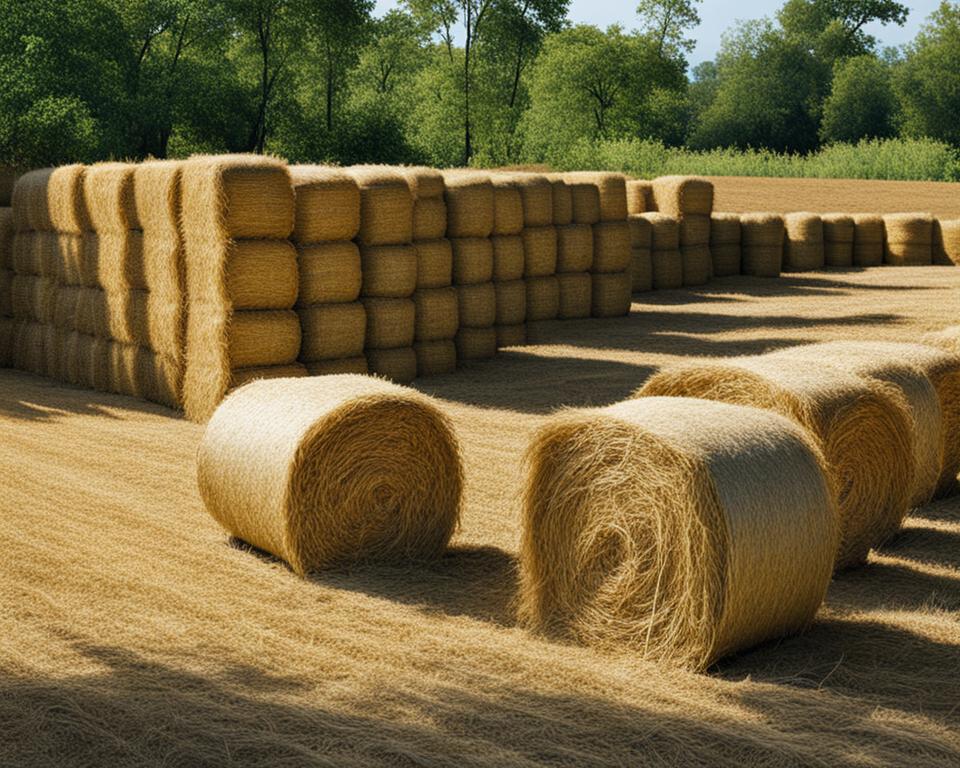
Selecting the appropriate straw bales for your garden is crucial to achieving a successful and productive garden. When choosing straw bales, it’s essential to consider the type and quality of the bale, as well as where it’s sourced from. In this section, we will provide valuable straw bale gardening tips to help you make the best decision.
To begin, let’s discuss the various types of straw bales available on the market. Generally, there are two popular choices: wheat straw bales and barley straw bales. While both options can work for your garden, their characteristics might impact the overall effectiveness of your garden.
| Type of Straw Bale | Characteristics | Pros and Cons |
|---|---|---|
| Wheat Straw Bale |
|
|
| Barley Straw Bale |
|
|
It’s essential to closely examine each type of straw bale before settling on a choice, as the characteristics of the straw bale directly impact the success of your garden.
Now that we’ve explored the different types of straw bales, let’s delve into some essential tips for sourcing and selecting them:
- Know the source: It’s paramount to purchase your straw bales from a trusted source. Ensure they are free of chemicals, mold, and unwanted seeds, as these can negatively impact your garden’s growth.
- Inspect the bales: Check the bales for any signs of mold or decay, and avoid those that are excessively damp or have an unpleasant odor.
- Density: Choose bales that are tightly packed and have a high density, as they retain water better and provide a more stable base for your plants.
- Consider the size: Ensure the bales are the right size for your garden and will fit comfortably in your designated space.
By following these tips, you’ll be well on your way to choosing the best straw bales for your garden, setting the stage for a successful and enjoyable gardening experience.
Prepping Your Straw Bales for Planting
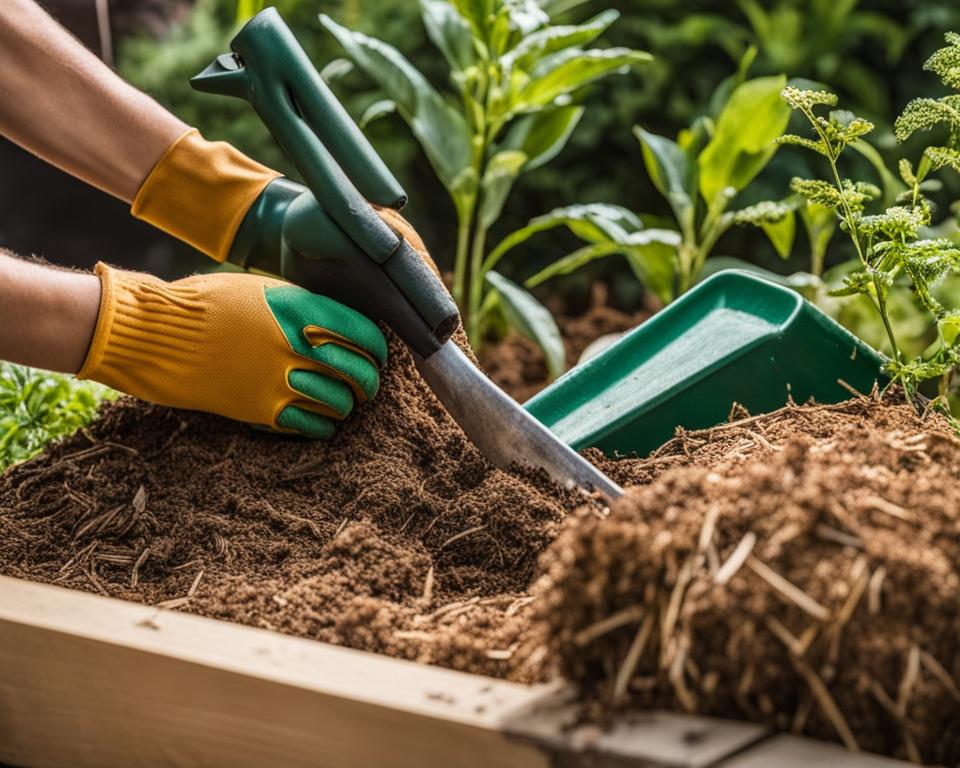
Proper preparation and conditioning of your straw bales are essential in ensuring a successful straw bale garden. This process involves breaking down the fresh straw within the bales, creating a rich environment for plants to grow and thrive. In this section, we will discuss the prepping process and the conditioning process to help you start your straw bale garden on a strong foundation.
Conditioning Process: Starting Your Straw Bales Garden
Conditioning the straw bales is crucial for starting a straw bale garden. This process helps decompose the straw, allowing it to act as a viable growing medium for plants. Here is a step-by-step guide for conditioning your straw bales:
- Choose the perfect location: Find a spot in your yard or on a balcony or patio that receives at least six hours of direct sunlight daily.
- Arrange the bales: Set the bales on edge, with the strings parallel to the ground. Be sure to purchase bales that are held together with organic twine or sisal, rather than synthetic materials.
- Water the bales: Soak your bales thoroughly, ensuring they are completely saturated. This introduces vital moisture and accelerates the decomposition process.
- Fertilize the bales: Apply a high-nitrogen fertilizer to the bales, which will kick-start the microbial activity within the straw. For an organic approach, use aged manure or compost. Spread the fertilizer evenly across the tops of the bales. If you are using a granular fertilizer, be sure to wet the fertilizer after application to help it permeate the bales.
- Water consistently: Keep the bales consistently moist throughout the conditioning period, which typically lasts 10 to 14 days. Avoid overwatering, as this may lead to mold and rotting.
- Maintain proper temperature: Monitor the internal temperature of the bales using a compost thermometer. The temperature should rise, then decrease to a consistent temperature suitable for plant growth (70-85°F).
- Add a top layer of soil: Once the bales have completed the conditioning process and the internal temperature is consistent, add a few inches of high-quality garden soil or compost to the top of the bales for planting.
By following these steps thoroughly, you are creating the ideal environment for your plants to grow and thrive. With proper prepping and conditioning, you will set yourself up for success in starting a straw bale garden. The result will be a unique and rewarding gardening experience that is both aesthetically pleasing and highly functional for growing your favorite plants.
Designing Your Vertical Straw Bale Garden
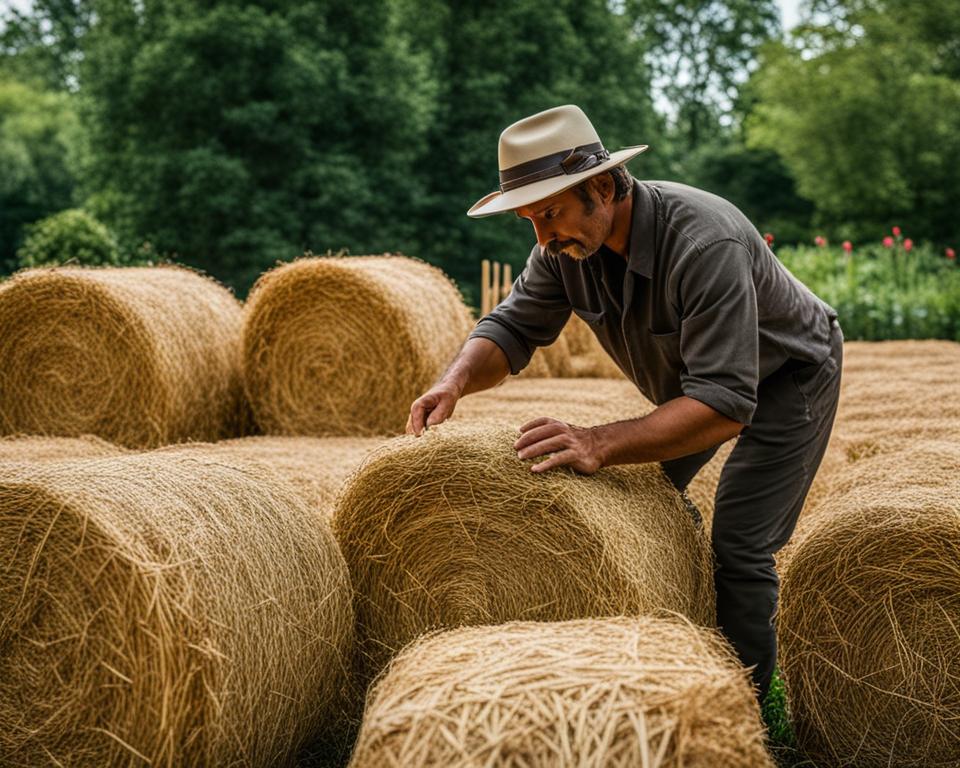
Designing a vertical straw bale garden is an exciting opportunity to create a uniquely functional and visually appealing space. Careful planning of your straw bale garden layout will ensure efficient use of space while highlighting the natural beauty of your plants. Incorporating vertical straw bale arrangements will maximize your growing area, especially in small or urban gardens.
To get started, consider the following key aspects of designing your garden:
- Assess the available space and sunlight
- Choose plant varieties suited for vertical growth
- Plan your straw bale arrangements
Remember to work with your garden’s unique characteristics to create a vertical straw bale garden that is both practical and aesthetically pleasing.
Assessing Space and Sunlight
Before designing your straw bale garden layout, observe the sun exposure and available space in your chosen location. Make note of any shaded areas, as well as slopes, and drainage patterns. Based on these observations, you can make informed decisions about the placement of your straw bales to ensure optimal growth for your plants.
Choosing Plant Varieties
Selecting the right plant varieties for your vertical straw bale garden is crucial to maximize productivity and visual appeal. Opt for plants that naturally grow vertically, such as climbing vines, trailing plants, or plants that can be trellised. Examples include tomatoes, cucumbers, beans, peas, and some squash varieties.
Planning Straw Bale Arrangements
When planning your vertical straw bale arrangement, get creative and consider different stacking patterns to form walls, towers, or even arches. To maintain stability, ensure the bales are securely fastened with twine, rope, or stakes, depending on your chosen arrangement.
| Straw Bale Arrangement | Description |
|---|---|
| Walls | Create a series of upright straw bale walls, with planters on top or within the bales themselves, for vertical growing. |
| Towers | Stack multiple bales vertically, with plants growing out of the bale sides and tops, for a more compact arrangement. |
| Arches | Form arches between vertical bale walls, and grow climbing vines over them for a visually striking effect. |
Remember that your garden’s design should cater to your particular needs and preferences, so don’t be afraid to experiment with different layouts and arrangements. By carefully planning your straw bale garden, you’ll create a visually captivating and highly productive growing space.
Planting Strategies for Vertical Gardening with Straw Bales
Vertical straw bale gardening offers an innovative and practical solution for those with limited garden space or interested in optimizing their growing area. To help you cultivate a thriving vertical garden, this section will cover planting strategies for straw bale gardening, as well as ideas to inspire you, and advice on selecting suitable plants for your straw bales.
Selecting Plants for Vertical Growth
Not all plants are well-suited for vertical growth in straw bales, so it’s essential to choose the ones that will thrive under these specific conditions. Here are some popular options for different types of vertical growth:
- Vining plants: tomatoes, cucumbers, beans, peas, and squash
- Climbers: ivy, morning glory, and clematis
- Trailing plants: nasturtium, lobelia, vines, and sweet potato vine
Now that you have an idea of the types of plants suitable for straw bale gardening, let’s discuss planting strategies and ideas for your vertical garden design.
Staggered planting: This technique involves planting seeds or seedlings at different heights on the bale, allowing for a more even distribution of sunlight and space for the plants to grow. By staggering your plants, you create a visually appealing display that maximizes your garden’s potential.
Succession planting: To ensure a continuous harvest, plant crops with varying maturity times. For example, you can plant fast-growing lettuce and slow-growing tomatoes together. Once you harvest the lettuce, it opens up space for the tomatoes to continue expanding as they mature.
Support structures: Provide your plants with sufficient support to encourage vertical growth. Trellises, stakes, and cages can all be used to support your plants, depending on what you are growing. Pairing the right support structure with your plants is essential for their success in a vertical straw bale garden.
Remember, when it comes to vertical straw bale gardening, it’s crucial to choose the right plants, provide ample support, and employ creative planting strategies to make the most of your garden.
Now, let’s explore some possible designs and layouts for your straw bale garden:
| Layout | Description |
|---|---|
| Simple Stack | A straightforward design, stacking your bales in a single row, allowing plants to grow vertically on both sides. |
| Herringbone | Arrange your bales in a zigzag pattern, leaving space for the plants to grow outwards and creating eye-catching visuals. |
| Spiral Tower | Create a tiered tower with your bales to accommodate several different plants at multiple levels, maximizing vertical space. |
| L-Shaped Corner | Construct a corner layout within your garden, positioning bales at right angles to create space for plants to extend both vertically and horizontally. |
With these planting strategies and ideas in mind, you are now ready to design and create a flourishing vertical straw bale garden. No matter the size or style of your garden, embracing vertical growth in straw bales will provide you with a unique and sustainable solution for maximizing your gardening potential.
Maintaining Your Straw Bale Garden
Once your vertical straw bale garden is set up and planted, it’s crucial to provide proper care to ensure the longevity and productivity of your garden. In this section, we will discuss some essential straw bale gardening techniques for maintaining and preserving your straw bale garden, from watering to fertilization and pest control.
To maintain a healthy and flourishing straw bale garden, follow these steps:
- Watering: Regular and adequate watering is essential for the success of your straw bale garden. Since straw bales drain quickly, they may require more frequent watering than traditional gardens. Monitor the moisture levels in your straw bales daily and adjust watering accordingly.
- Fertilizing: Straw bale gardens need consistent nutrients to stay healthy and productive. Apply a balanced, preferably organic, liquid fertilizer every two weeks to provide the necessary nutrients to your plants. Follow manufacturer instructions to ensure you’re using the right amount for your garden.
- Pest and Disease Control: Keep an eye on your plants and bales for signs of pests and diseases. Address issues early on by using organic pest controls and disease management techniques, such as neem oil, diatomaceous earth, or insecticidal soap.
- Mulching: Use a layer of organic mulch on top of your straw bales to regulate temperature, conserve moisture, and suppress weeds. This will also help to keep your plants healthy and resilient.
It’s essential to address common issues that may arise in a straw bale garden. Here’s how to tackle some of the most common challenges:
“A well-maintained straw bale garden can be a rewarding and productive gardening experience.”
| Common Issues | Solutions |
|---|---|
| Overheating | Ensure proper ventilation and consider shading your garden during peak heat periods. |
| Excessive Moisture | Water your straw bale garden less frequently or install a drainage system to prevent issues related to excess moisture. |
| Depleted Nutrients | Regularly apply fertilizer to replenish nutrients in your straw bale garden; consider using a slow-release granular fertilizer to maintain a consistent nutrient supply. |
| Weed Growth | Apply a layer of organic mulch on top of your straw bales or manually remove weeds as soon as they appear. |
In conclusion, maintaining your straw bale garden is vital to ensure a thriving and productive space for your plants to grow. By following proper watering, fertilizing, and pest control measures, you can enjoy the many benefits of straw bale gardening for seasons to come.
Benefits of Straw Bale Gardening
Straw bale gardening offers numerous benefits in comparison to traditional gardening methods. These benefits primarily fall under two major categories: eco-friendly gardening practices and physical advantages, which translate to accessibility and ergonomics. Let’s delve deeper into these benefits to offer a better understanding of why straw bale gardening is becoming an increasingly popular and sustainable option for both new and experienced gardeners.
Eco-Friendly Gardening Practices
Straw bale gardening has many eco-friendly aspects that make it a sustainable approach to cultivation. A few of its advantages include:
- Reduced water consumption: Straw bales effectively retain moisture, minimizing the need for frequent watering. This feature helps conserve water resources and reduces water bills.
- Less soil erosion: Since straw bale gardening doesn’t require tilling or digging, the risks of soil erosion and compaction are significantly reduced.
- Waste reduction: Instead of burning or discarding straw, it is put to productive use as a growing medium for plants, recycling an otherwise waste product from agricultural processes.
- Less use of harmful chemicals: Straw bale gardens typically require fewer fungicides and pesticides, as they create an inhospitable environment for many common garden pests and diseases.
Physical Advantages: Accessibility and Ergonomics
In addition to being a sustainable gardening method, straw bale gardening provides several physical advantages that cater to gardeners of all abilities.
- Heightened planting surface: The raised height of straw bales in comparison to traditional gardening beds relieves strain on the knees, back, and hips, allowing for a more ergonomic gardening experience.
- Accessible to individuals with limited mobility: The elevated planting surface makes straw bale gardens more accessible for those with physical disabilities, mobility issues, or older individuals who may have trouble bending down or kneeling for extended periods.
- Low maintenance: Straw bale gardening requires less labor in terms of soil preparation, tilling, weeding, and digging, making it an attractive option for those who may not have the time or physical ability to commit to these tasks.
Straw bale gardening is not only an eco-friendly and sustainable gardening method, but it also offers physical advantages that make it an accessible and ergonomic choice for gardeners of all skill levels and abilities.
Considering these diverse benefits, it becomes clear why straw bale gardening is gaining traction among contemporary urban gardeners seeking an environmentally conscious, accessible, and innovative approach to cultivation. Embracing this sustainable method can help contribute towards a more eco-friendly and ergonomic gardening experience for all.
Conclusion
Implementing vertical straw bale gardening techniques has proven to be both easy and sustainable, offering numerous advantages that can enhance your gardening experience. As discussed throughout the article, this unique approach allows you to take advantage of limited space, reducing the need for traditional soil-based cultivation methods, while still achieving excellent crop yields.
Appreciating the various straw bale gardening benefits can encourage more individuals to adopt this eco-friendly gardening approach. Notably, it contributes to a considerable reduction in water consumption and chemical use, promoting a healthier environment for you and your family. Moreover, vertical straw bale gardening creates a more physically accessible and ergonomic workspace, allowing gardeners of all abilities to participate comfortably.
In sustainable gardening conclusion, vertical straw bale gardening provides garden enthusiasts with an effective, efficient, and environmentally responsible alternative to conventional gardening practices. By embracing this innovative method, you make a positive impact on both your backyard harvest and the environment as a whole. So, consider giving vertical straw bale gardening a try and experience firsthand the transformation it brings to your gardening journey.
FAQ
What is vertical straw bale gardening?
Vertical straw bale gardening is an innovative and sustainable gardening method that involves arranging straw bales vertically, providing an elevated growing medium for plants. This technique differs from traditional gardening methods by maximizing vertical space and offering numerous benefits such as improved accessibility, efficient use of space, and easier plant care.
How do I choose the right straw bales for my garden?
When choosing straw bales for your garden, consider factors like bale size, type of straw, and quality. Look for bales that are tightly bound and made from organic or pesticide-free straw, such as wheat, barley, or oat. Ideally, select bales that are uniform in size and shape to facilitate easy stacking and arrangement in your garden.
How do I condition and prepare my straw bales for planting?
Before planting, the straw bales need to undergo a conditioning process to break down the straw and create a hospitable environment for plant growth. This process typically takes 10 to 14 days and involves adding high-nitrogen sources such as blood meal, fish emulsion, or aged manure to the bales. During this time, the bales should be watered regularly and monitored for temperature changes, which indicate the presence of microbial activity breaking down the straw.
How should I design my vertical straw bale garden?
When designing your vertical straw bale garden, consider factors like available space, sunlight, and drainage. Arrange your bales in a way that maximizes vertical space without compromising stability. You can also create a visually appealing design by varying bale heights, using garden ornaments, or integrating trellises for climbing plants.
What plants are suitable for vertical straw bale gardening?
A wide range of plants can thrive in a vertical straw bale garden, including vegetables, herbs, and flowers. When selecting plants for your garden, consider their growth habits, sunlight requirements, and compatibility with other plants in the same space. Some popular plants for vertical straw bale gardening include tomatoes, peppers, cucumbers, squash, beans, peas, and various annual flowers.
How do I maintain and care for my straw bale garden?
Proper maintenance is crucial for a successful straw bale garden. Regular watering, fertilization, and pest control are essential to keeping plants healthy and productive. Monitor your garden for any signs of disease or pests, and address issues promptly to prevent them from spreading. As the season progresses and plants mature, you might need to provide additional support or pruning to maintain the garden’s appearance and productivity.
What are the key benefits of straw bale gardening?
Vertical straw bale gardening offers numerous benefits, including sustainability, easy maintenance, and enhanced accessibility for gardeners of all abilities. This method promotes eco-friendly practices by reusing organic materials, reducing water usage, and improving soil health. Additionally, straw bale gardening allows for an ergonomic and accessible gardening experience, as it eliminates the need for bending or kneeling, making it a suitable option for people with mobility limitations or back pain.

